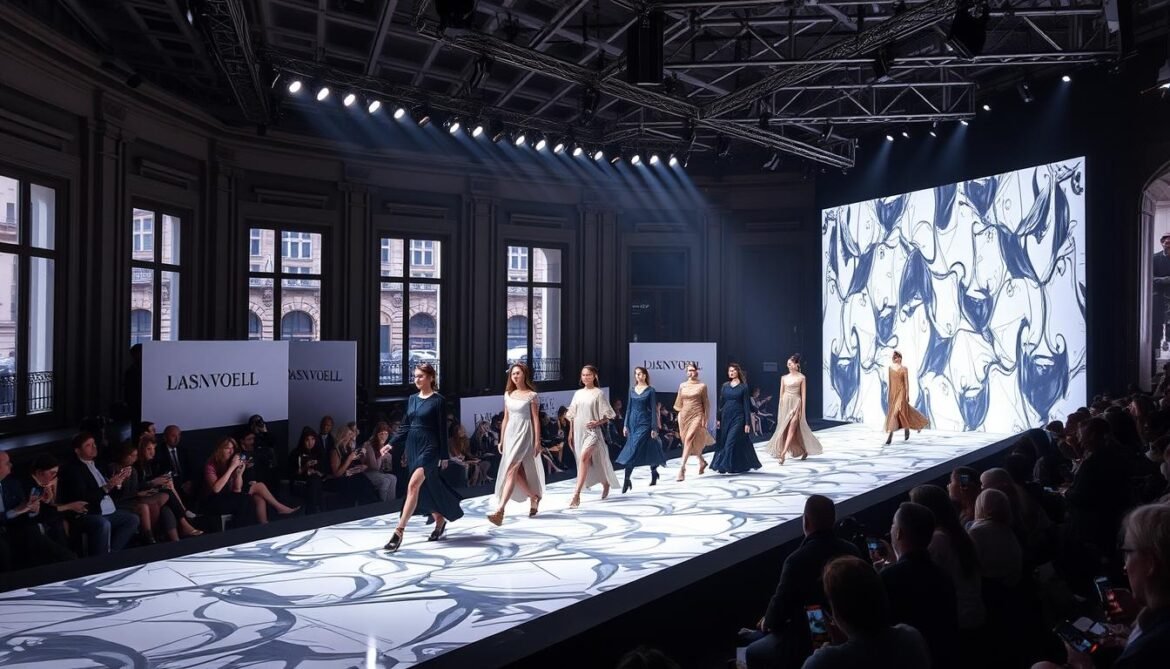Paris Fashion Week stands as the pinnacle of the global fashion calendar, where creativity, craftsmanship, and cultural influence converge in spectacular runway presentations. Held biannually in the fashion capital of the world, this prestigious event showcases the future of style through the visionary work of established luxury houses and emerging designers alike. From revolutionary silhouettes to boundary-pushing concepts, Paris Fashion Week consistently sets the standard that influences wardrobes worldwide.
Event Highlights: Defining Moments from Paris Fashion Week
The latest edition of Paris Fashion Week delivered unforgettable moments that captivated the fashion world. Chanel transformed the Grand Palais into an enchanting garden, where models navigated through blooming flowers in the house’s signature tweed updated with modern proportions. Louis Vuitton’s presentation featured a surprise collaboration with renowned artist Yayoi Kusama, merging high fashion with contemporary art in a vibrant explosion of polka dots and sculptural elements.
Saint Laurent’s show under the Eiffel Tower created a breathtaking juxtaposition of Parisian landmarks with Anthony Vaccarello’s razor-sharp tailoring and 1980s-inspired silhouettes. Fashion critic Vanessa Friedman of The New York Times noted, “Paris continues to prove why it remains the ultimate fashion destination—where commercial viability and artistic expression aren’t mutually exclusive but rather two sides of the same exquisitely crafted coin.”
Experience the Full Runway Magic
Want to see more breathtaking moments from the latest shows? Watch the complete runway presentations from your favorite designers.
Trend Analysis: The Defining Aesthetics of the Season
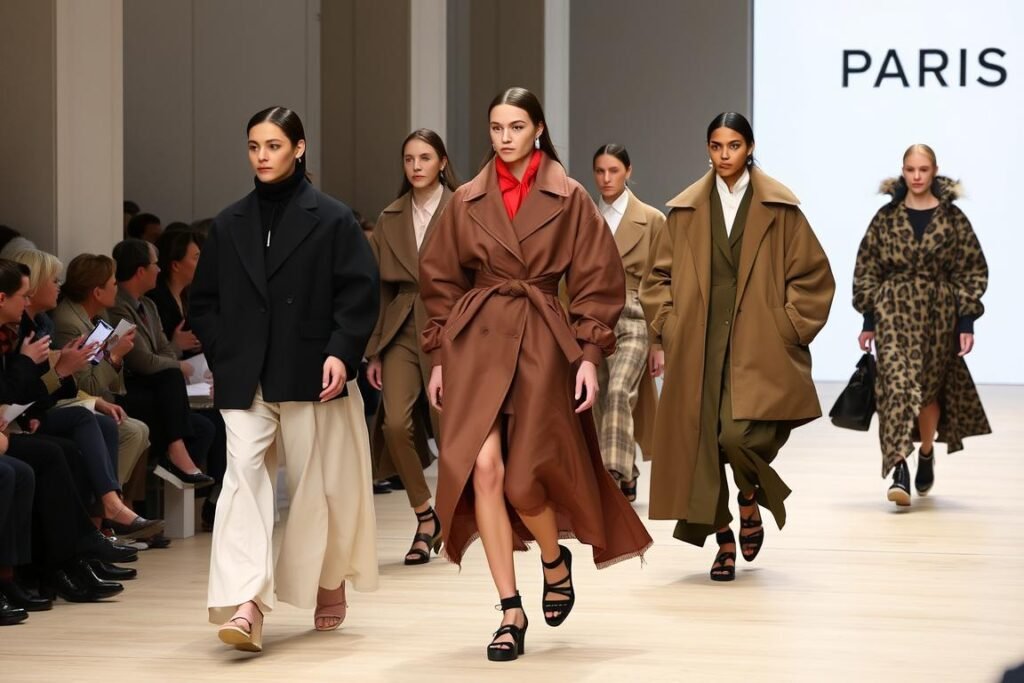
This season’s Paris Fashion Week revealed several dominant trends that will influence global fashion in the coming months. Oversized silhouettes continued their reign, but with a refined approach that balances volume with structure. Designers like Balenciaga and Rick Owens pushed proportions to new extremes, while Dior offered more wearable interpretations of the trend.
Sustainability took center stage with unprecedented prominence. Stella McCartney’s collection featured innovative materials derived from mushrooms and agricultural waste, while Marine Serre continued her commitment to upcycling with garments crafted from reclaimed textiles. “The industry is finally embracing sustainability not as a marketing tool but as a fundamental design principle,” observed Sarah Mower of Vogue.
Color Trends
- Vibrant “Digital Lavender” – named Pantone’s color of the year
- Earth-inspired terracottas and clay tones
- Unexpected color blocking with neon accents
- Metallic finishes, particularly liquid silver
Fabric & Texture Trends
- Tactile fabrics with 3D textures and embellishments
- Sheer layers creating depth and dimension
- Technical fabrics with environmental benefits
- Artisanal craftsmanship and handwoven textiles
The revival of 1990s minimalism appeared across multiple collections, with clean lines and monochromatic palettes at The Row and Hermès. This aesthetic counterbalance to recent maximalist trends signals a pendulum swing toward refined simplicity. Meanwhile, the “new sexy” emerged through strategic cutouts, body-conscious silhouettes, and sheer fabrications at Mugler and Coperni.
Explore This Season’s Key Trends
Dive deeper into the season’s most influential trends with curated galleries and expert analysis.
Designer Spotlights: The Visionaries Shaping Fashion’s Future
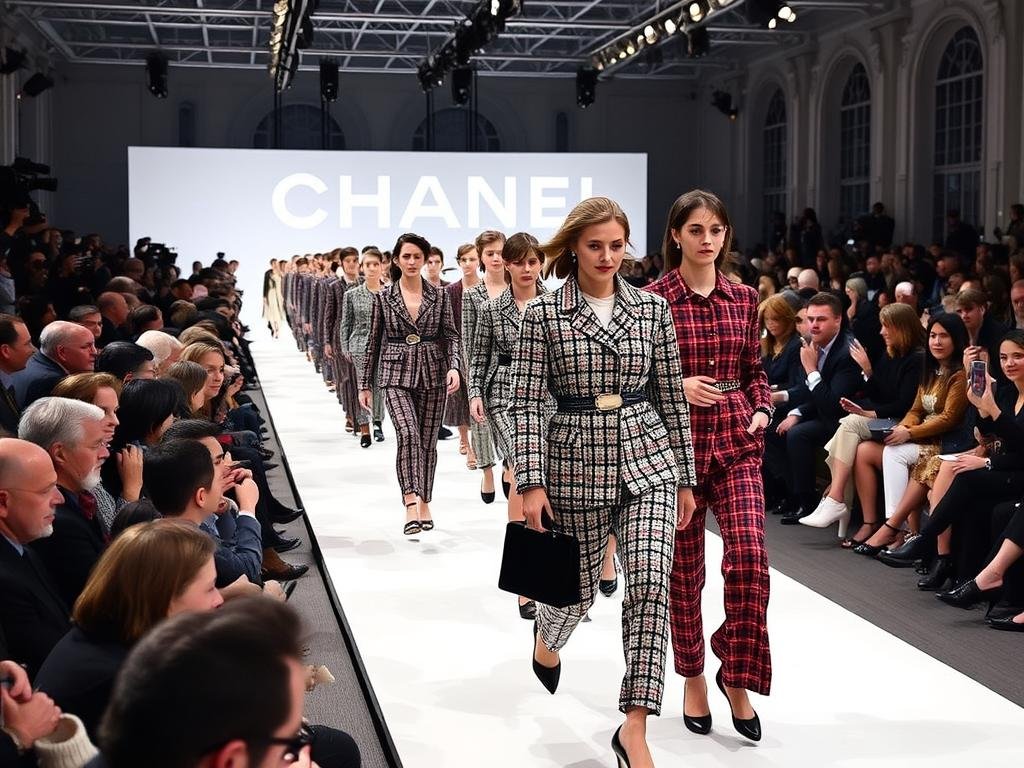
Chanel: Reinventing Tradition
Under Virginie Viard’s direction, Chanel continues to evolve its iconic codes while maintaining the house’s elegant DNA. This season’s collection paid homage to Coco Chanel’s revolutionary spirit through modern interpretations of the brand’s signature tweed and bouclé fabrics. Standout pieces included deconstructed jacket dresses and relaxed evening wear that balanced luxury with wearability.
“Viard has found her confident voice at Chanel, honoring tradition while subtly pushing the house forward,” noted fashion critic Tim Blanks.
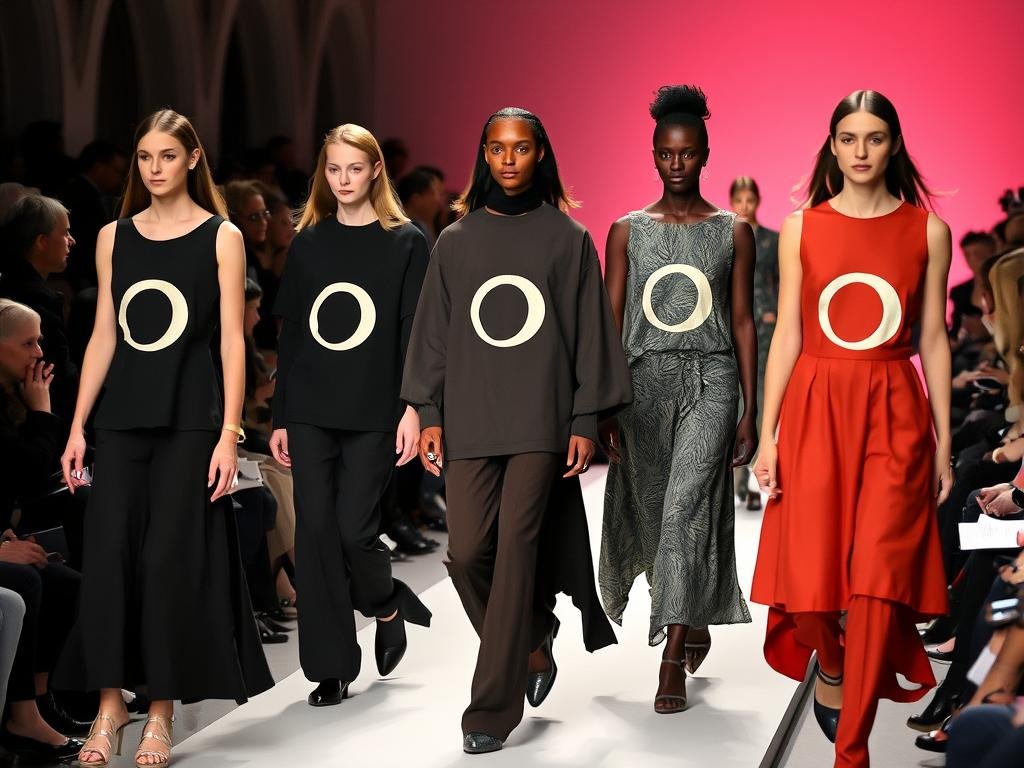
Marine Serre: Sustainable Visionary
Marine Serre has revolutionized sustainable fashion through her upcycled collections that transform discarded materials into coveted luxury pieces. Her latest presentation featured the brand’s signature crescent moon motif across regenerated denim, repurposed silk scarves, and innovative textiles created from post-consumer waste.
“Serre doesn’t just talk about sustainability—she has built her entire creative process around it, proving that environmental consciousness and high fashion can coexist beautifully,” said Vanessa Friedman.
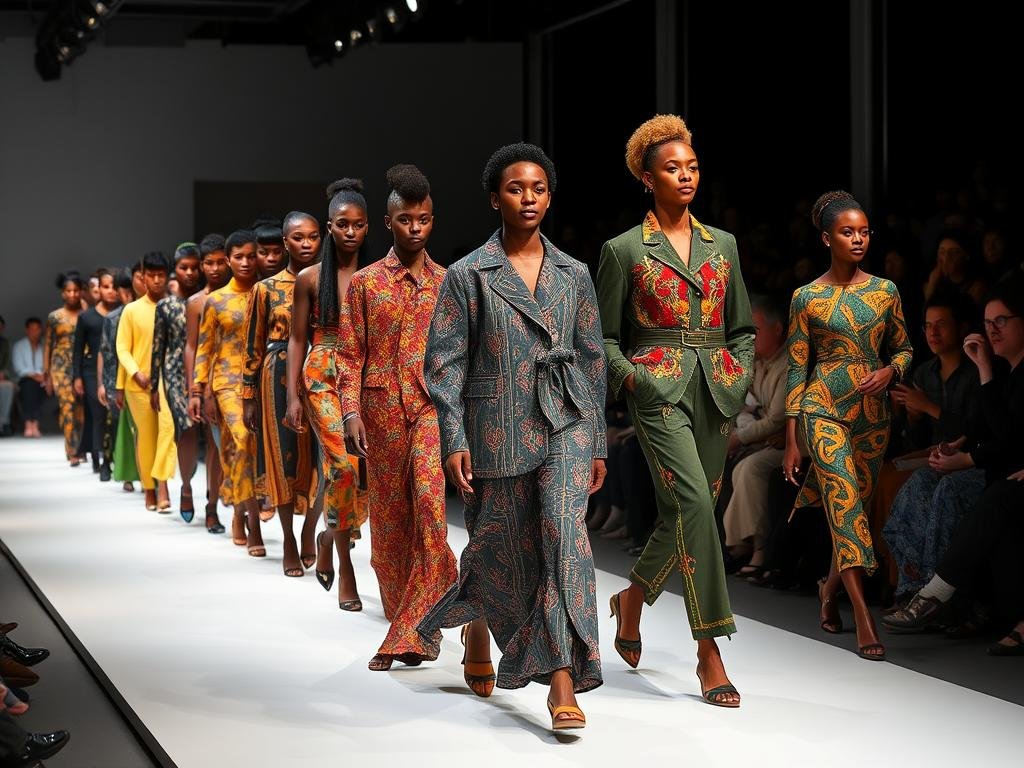
Thebe Magugu: Rising Star
LVMH Prize winner Thebe Magugu continues his meteoric rise with collections that blend his South African heritage with contemporary design sensibilities. His Paris Fashion Week presentation explored themes of cultural identity through impeccable tailoring, storytelling prints, and thoughtful details that reference African art and history.
“Magugu represents fashion’s exciting future—designers who bring fresh cultural perspectives while mastering the technical craft of luxury clothing,” commented Sarah Mower of Vogue.
Cultural Impact: How Paris Fashion Week Influences Global Style
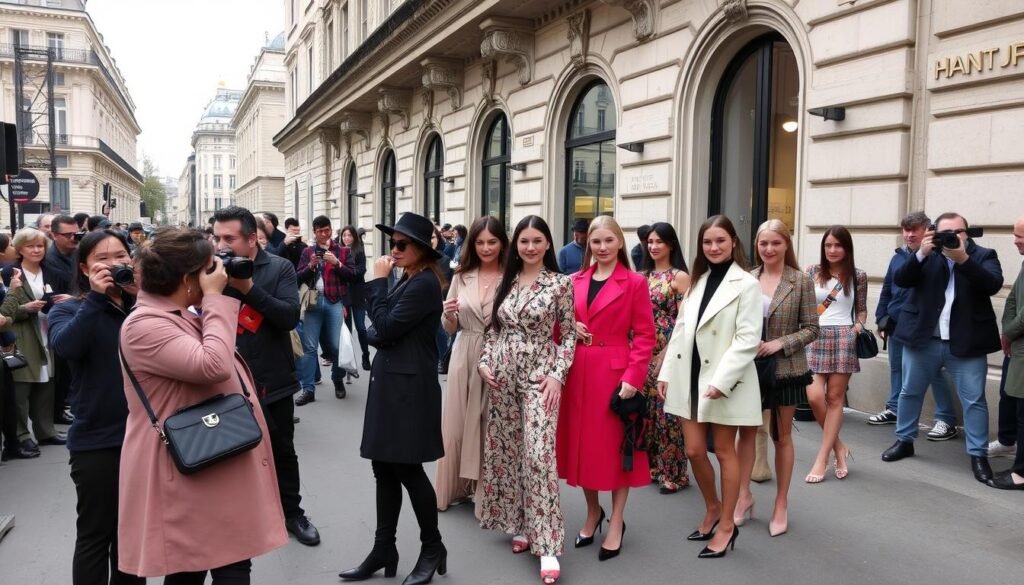
Paris Fashion Week’s influence extends far beyond the runway, shaping everything from fast fashion to interior design trends. The event generates over 1.2 billion social media impressions during its run, with key looks disseminated globally within minutes of their debut. This immediate digital distribution democratizes high fashion, allowing trends to permeate popular culture at unprecedented speed.
Street style has become nearly as influential as the official shows, with photographers documenting attendees’ ensembles outside venues. These images create a secondary fashion narrative that often translates runway concepts into more accessible styling ideas. Fashion historian Valerie Steele observes, “Paris street style during fashion week has become a cultural barometer that bridges haute couture with everyday fashion interpretation.”
“Paris Fashion Week remains the ultimate arbiter of style because it balances commercial viability with artistic expression better than any other fashion week. It’s where true innovation happens.”
The economic impact is equally significant, with Paris Fashion Week generating approximately €1.2 billion for the local economy through hotel bookings, restaurant patronage, and retail spending. Beyond economics, the cultural exchange facilitated through the event brings together creative perspectives from around the world, establishing Paris as fashion’s global crossroads.
Experience Paris Fashion Week Street Style
Explore the most inspiring street style looks from fashion’s most stylish attendees.
Global Fashion Week Comparison: Paris vs. The World
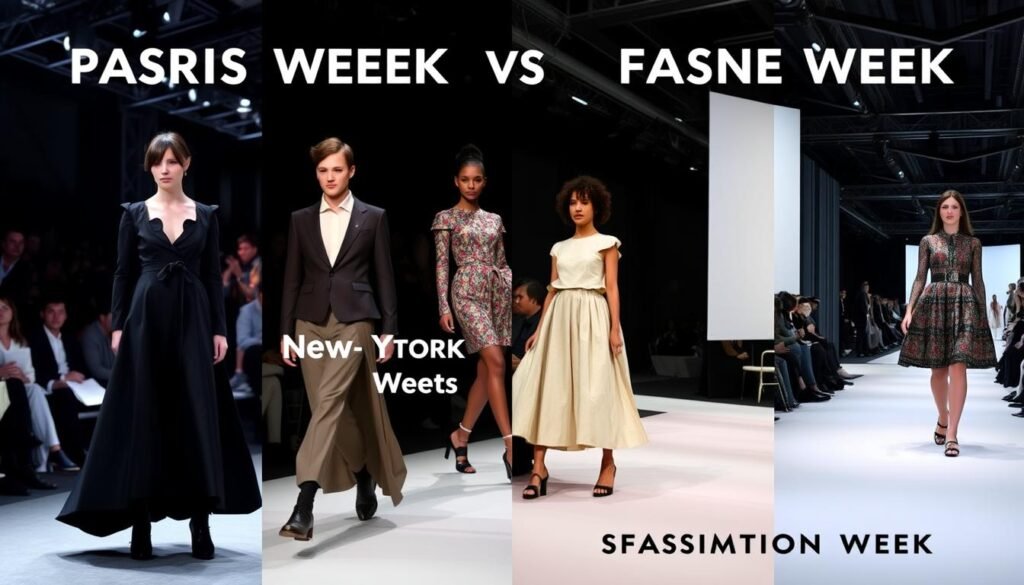
| Fashion Week | Key Characteristics | Industry Focus | Celebrity Presence | Commercial Impact |
| Paris Fashion Week | Haute couture heritage, artistic expression, established luxury houses | High fashion, craftsmanship, heritage | A-list celebrities, fashion royalty, industry veterans | €1.2 billion to local economy |
| New York Fashion Week | Commercial viability, wearability, diversity | Ready-to-wear, contemporary brands | American celebrities, influencers, athletes | $900 million to local economy |
| Milan Fashion Week | Craftsmanship, luxury materials, family-owned houses | Luxury accessories, textiles, tailoring | European celebrities, Italian elite | €800 million to local economy |
| London Fashion Week | Experimental, avant-garde, emerging talent | New designers, conceptual fashion | British celebrities, music industry figures | £300 million to local economy |
While each fashion week has its distinct identity, Paris maintains its position as the most prestigious. New York focuses on commercial viability and wearable fashion, Milan emphasizes craftsmanship and luxury materials, and London champions experimental design and emerging talent. Paris uniquely balances artistic expression with commercial appeal, setting it apart as the ultimate fashion authority.
Fashion journalist Robin Givhan explains, “New York sells clothes, Milan sells craftsmanship, London sells ideas, but Paris sells dreams. That’s why it remains the pinnacle of the fashion calendar.”
Future Directions: What’s Next for Paris Fashion Week
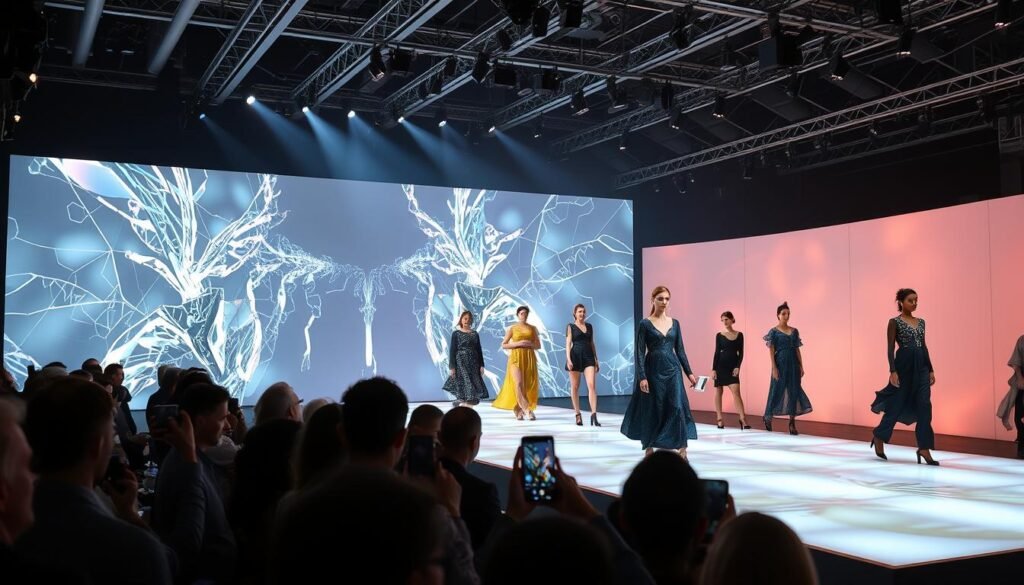
As Paris Fashion Week evolves, several key trends are shaping its future trajectory. Technology integration continues to transform the runway experience, with digital showcases complementing physical presentations. Balenciaga’s recent collaboration with Fortnite and Louis Vuitton’s experimentation with augmented reality suggest a future where the boundary between physical and digital fashion becomes increasingly fluid.
Sustainability will remain a central focus, with the Fédération de la Haute Couture et de la Mode implementing stricter environmental guidelines for participating brands. Industry analysts predict a continued shift toward circular fashion models, with rental and resale platforms gaining prominence alongside traditional retail channels.
Emerging Trends for Next Season
- Increased integration of digital fashion and NFTs
- Circular business models and rental platforms
- Hyper-personalization through AI and data
- Smaller, more intimate presentation formats
Predicted Designer Movements
- More independent designers joining official calendar
- Continued creative director reshuffling at major houses
- Increased presence of Asian luxury brands
- Collaborations between heritage houses and digital artists
Diversity and inclusion initiatives will expand beyond model casting to encompass broader representation throughout the industry. “The future of Paris Fashion Week depends on its ability to embrace global perspectives while maintaining its unique heritage,” notes Pascal Morand, Executive President of the Fédération de la Haute Couture et de la Mode.
Stay Ahead of Fashion’s Evolution
Be the first to know about emerging designers, innovative concepts, and the future of Paris Fashion Week.
The Enduring Allure of Paris Fashion Week
Paris Fashion Week continues to captivate the global imagination through its perfect balance of tradition and innovation. While other fashion weeks may focus on commercial success or experimental concepts, Paris uniquely preserves the artistry of fashion while embracing its evolution. As digital technologies, sustainability concerns, and cultural shifts reshape the industry, Paris remains the definitive stage where fashion’s future unfolds.
The event’s enduring significance lies in its ability to transcend mere clothing to become a cultural touchstone—a biannual moment when creativity, craftsmanship, and commerce converge to define not just what we wear, but how we express our identities in an ever-changing world. In the words of the late Karl Lagerfeld, “Paris is always a good idea, especially during fashion week.”
Mark Your Calendar for the Next Paris Fashion Week
Don’t miss the upcoming presentations from the world’s most influential designers.

